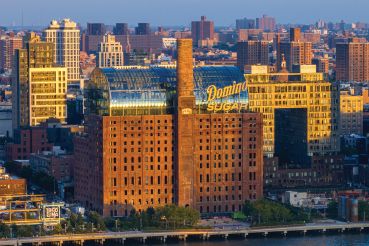An owner’s options to take advantage of the potential of their properties consist of high-rent deregulation, where the legal rent on a vacant unit gets to $2,000 per month, or high-income deregulation, where the legal rent reaches $2,000 per month and the tenant has earned $175,000 for two consecutive years (bills pending in the Senate would change the thresholds to $2,700 and $240,000). Either of these removes the unit from the clutches of stabilization.
Without these mechanisms to increase revenue, rent-regulated properties would eventually become insolvent, as operating expenses have increased at dramatically higher rates than regulated rental increases. From 1997 through this year, aggregate regulated rents have increased 40.4 percent while real estate taxes alone have increased by 137.1 percent.
Abuse by tenants within the system of rent regulation is widespread, and, unfortunately but not surprisingly, housing courts in New York are overwhelmingly pro-tenant. Consequently, many tenants do not relinquish their apartments after they have moved. In order to be rent-regulated, the unit must be the tenant’s primary residence. After a tenant moves or purchases a home, they will often illegally sublet the apartment, pocketing the spread.
Three- and four-bedroom units, particularly in northern Manhattan, are frequently operated like mini-hotels, as the tenant will rent out unused bedrooms, often collecting more from the subtenants than they pay to the owner.
Others who can will manipulate their income to avoid earning more than $175,000 for two years in a row. A client of mine sold a portfolio of properties several years ago. We closed $8 million of the sales in one year, and the closings for the remaining $7 million were delayed for a year so that his income would not be above $175,000 for two years in a row. He lived in a three-bedroom, rent-stabilized apartment in the 70s off Park Avenue and wanted to preserve his stabilized status.
Recently, tenant advocates have been using the term “predatory equity” for investors who buy rent-regulated properties and seek to remove tenants who are illegally holding onto non-primary units, illegally subletting units, running mini-hotels out of their apartments and earning more money annually than guidelines permit. They claim owners harass tenants to move, but the simple fact is that if a regulated tenant is in possession of a unit legally, he or she has absolutely nothing to worry about. These owners are simply trying to identify tenants who are unfairly taking advantage of the system. Because of these abuses, the pro rata cost of operating an apartment often exceeds the rent that is being paid on that unit, placing additional pressure on owners to weed out the cheaters.
IN JANUARY OF THIS year, the New York State Assembly passed a package of bills to modify and strengthen rent regulation to an even greater degree. Perhaps the most troubling of these bills was the one that would limit the benefit to owners when they make major capital improvements (MCI). For those of who weren’t around in the 1970s, this city witnessed widespread abandonment of multifamily properties, and entire neighborhoods were torched, leading to decay and blight.
To address this problem, the MCI pass-through was created, which established an incentive for private-sector investment by allowing regulated rents to increase by 1/84th of a unit’s pro rata share of the cost of the improvement. As a result, billions of dollars have been spent to upgrade properties. The quality of the housing stock has become significantly better, and our real estate tax base has increased significantly. The pending bill would marginalize the MCI benefit, making it merely a surcharge until the money invested is recouped. This would have a devastating effect on our local economy. There would be little incentive for an owner to do more than patchwork repairs to buildingwide systems, resulting in thousands of construction-related job losses and a deterioration in the quality of our housing stock.


